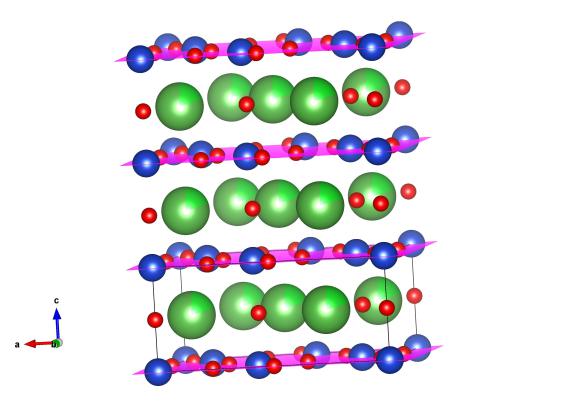Resistance is futile – Lanthanum Barium Copper Oxide
What does it look like?

Image generated by the VESTA (Visualisation for Electronic and STructual analysis) software http://jp-minerals.org/vesta/en/
The Lanthanum Barium Copper Oxide crystal structure, the large green atoms are the mixture of Lanthanum and Barium atoms, with the blue atoms representing copper and the red atoms oxygen. The copper and oxygen form copper oxide layers (highlighted by the pink sheets) which are critical to the strange properties of this material.
What is it?
While the idea of superconductivity has been around since early last century, the search for a superconducting material that can operate at high temperatures (the so called "High Tc superconductor") has really only been considered since the 1980s. This field of research has taken off exponentially since the discovery of the first transition metal oxide, High Tc superconductor, Lanthanum Barium Copper Oxide (La5-x Bax Cu5 O5(3-y), or simply LBCO). The obvious benefits of room temperature (or higher) superconductors, which conduct electricity without resistance, may include lossless power generators, transformers and transmission lines, powerful supercomputers, and even superfast magnetically levitated trains. Needless to say, the discovery of room temperature superconductors would revolutionise the way we use and generate power.
Where did the structure come from?
J. Georg Bednorz and K. Alexander Mueller, who were working in the IBM lab at the time, were researching high temperature superconductivity in ceramics when they came across LBCO in 1986. They were able to show that the superconducting transition temperature in this material was 35K – at least 12K higher than the previous superconducting material. This discovery led to the two scientists sharing the Nobel Prize in Physics in 1987 “for their important break-through in the discovery of superconductivity in ceramic materials”. Since this discovery there has been a strong race to understand the mechanisms of superconductivity in Cu-O materials, in particular how magnetism influences its behaviour.
The crystal structure displayed here was first reported in Materials Research Bulletin 1985 20 pp. 667-71.






